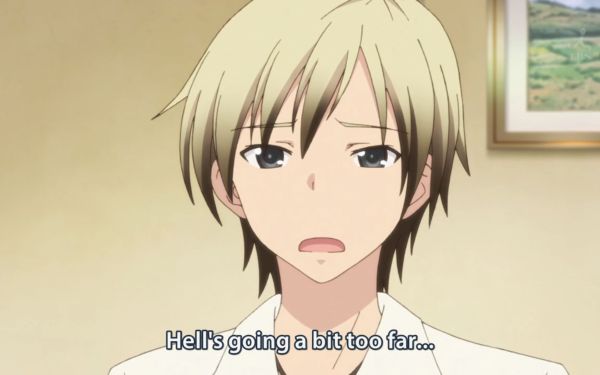
“Hell is going a bit too far” is how most of us feel, I am sure. But it still fascinates people, for some reason.
The other day while I was writing on my JulNoWriMo story (which seems about to become an AugNoWriMo story now…) the viewpoint character was browsing his uncle’s library of Master Ljoset’s 1000 books. He was actually looking for the Book of Learning, but his eyes fell on something called the Book of Hell and his curiosity got the better of him, as it probably would with quite a few of us.
Ironically, the book begins with the question: “Why is there so much interest in Hell, when no one intends to go there?” I think that is a pretty good question. The Christian Bible, for instance, has very little information about Hell. And yet the Christian west has developed elaborate traditions, and Hell has become one of the facets of the religion that has spread over in popular culture. Nor is this a specifically Christian thing: Buddhism has also developed similar elaborate descriptions of Hell, and even paintings including the mandatory naked sinners. Because, it’s not Hell unless there are naked people? Well, that’s a story in itself, but Hell has captivated the minds of many from China to Europe, despite the sparse source material.
The author of the imaginary book continues to posit two kinds of readers. The soft-hearted ones vaguely fear that their flaws will yet condemn them, despite their fervent wish for this to not happen. So they want to be prepared, or better yet, warned away. Meanwhile the cold-hearted may imagine their enemies in Hell, or just feel a thrill of excitement from thinking about human suffering.
The book presents the view that Hell is not a punishment, but a necessary mercy. He compares it to a grisly surgery where a mother dies shortly before she was due to give birth. In order to free the living child, it is necessary to cut open the dead mother, no matter how sickening the process may seem. The living child in this case is the spirit, also known as spirit-soul or “immortal soul”, whereas the dead mother is the body-soul or the personality acquired in this lifetime. This “soul” is mortal, albeit less so than the body, and its annihilation is the second death. Through the destruction of the lost “soul”, the “spirit” is set free and can return to the higher realms where it has its home.
Ideally, it would not have been necessary to destroy the personality. It could have been influenced and reshaped into a being that could live in the light-filled realms. In this case, there is no need for a hell. Both mother and child are well. The personality goes on to a blessed afterlife. The spirit may eventually return to Earth again to power another body and soul, a process known as reincarnation. This does not negatively affect the first personality, which remains “saved” in its appropriate Heaven.
The book goes into some detail on the process of destruction and why the specific procedures are necessary. Basically they are an “unwinding” of the personality, based on facing the consequences of its choices. Because they were not able to reflect on themselves in life, they are drawn to situation where they meet their own reflection and get to see themselves when it is too late to change. This is what causes them to unravel and eventually give up the ghost, or spirit, which returns to its origin, presumably to try again at a later time.
Well, that’s how my utterly imaginary character understands this utterly imaginary book written by another of my utterly imaginary characters. I find it interesting, but who knows whether there is any truth in it.
